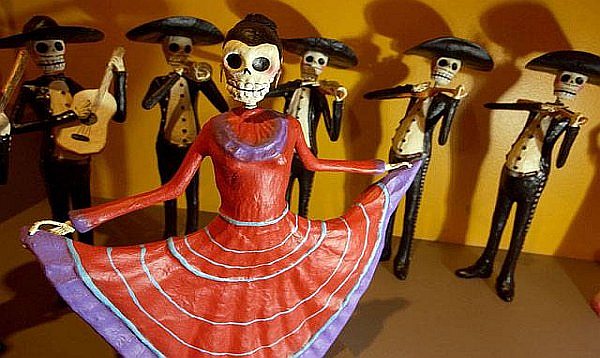Mexico - During the first two days of November, Mexicans everywhere observe the Day of the Dead. Just the name - Day of the Dead - brings up images of skulls and zombies.
The Day of the Dead, which is actually three days beginning on October 31st and culminating on November 2nd, is one of the most popular holidays in Mexico. It is a day when family members remember and honor their loved ones who have passed on.
In the weeks leading up to the holiday, the markets all over Mexico fill up with unique, seasonal treats like pan de muerto, sugar skulls, candles, and colorful flowers like the traditional cempasúchil (marigolds.) These are some of the supplies one needs to put together offerings at home and decorate gravesites; all part of the tradition.
Many people liken Day of the Dead to All Saints Day and All Souls Day, which are Catholic holidays celebrated in many parts of the world. But Mexico’s Day of the Dead is not directly related to these holidays. Instead, it’s a tradition that goes back to the Aztecs, who believed that on this day, the doors to Mictlan, a place the Aztecs believed souls went to live after death, opened and family members could visit with their loved ones.
Because the Spaniards could not stop this important ritual, the best they could come up with was to move the date so that it coincided with All Saints Day and All Souls Day. Since then, the Day of the Dead in Mexico had been structured around two days: November 1st is the day to honor the souls of the angelitos, children who died after being baptized, and November 2nd is the day of the dead for adults. Families go to the cemetery to clean the graves and celebrate with loved ones.
Traditions of Mexico’s Day of the Dead
 |
Traditionally, people build elaborate altars of offerings in their houses. They place photographs of their deceased loved ones, sugar skulls for the children, pan de muerto, fruits, food, tequila or mezcal, candles, flowers, effigies of skeletons and saints, and sometimes, water by the door for those spirits who are just passing by.
At the cemeteries, specially the more rural ones, they decorate the gravesites of their loved ones. They burn candles and incense and visit with family.
One of the important figures seen on the Day of the Dead is the Lady of the Dead, also known as "La Catrina," the skeleton of an upper class woman wearing a fancy dress and hat.
The image comes from a 1910 etching by Jose Guadalupe Posada, an artist and political cartoonists whose satires of the dictatorship of Porfirio Diaz often portrayed people as skeletons going about their every day life.
Today, variations of Mexico’s Day of the Dead are celebrated throughout the United States. In many cases, people paint their faces as skulls, carry crosses, and have a good time. Many times these celebrations accompany a protest or marches for immigrant rights.
Meanwhile, in working class Mexican immigrant communities throughout the US, people celebrate this important holiday as best they can, and remember the loved ones they left behind in Mexico and in the afterlife.


